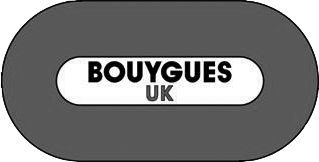Categories for Uncategorized
January 4, 2018 12:03 pm
Helical piles are a type of structural foundation. In other words, they are designed to bear the weight of a building so that it does not sink into the soil. All properties are built upon a foundation, because it helps spread the heavy load evenly across the ground. There are many advantages to using helical piles, including the ease of installation and consequent removal, if necessary. Of course, helical piles must be installed by a trained professional and should not be seen as a DIY project. Helical piles are fitted into the ground in a similar way that a screw is inserted into wood, although on a much larger scale. Using machine-mounted hydraulic or electrically powered drilling equipment, they are...
September 15, 2017 9:58 am
Foundations are essential for spreading the weight of a building or other type of construction across the ground so that it doesn’t sink. There are many things to think about when deciding which foundation is the most ideal for your project, including the condition of the soil. You must have a clear understanding of how each type of foundation works and how they could be of benefit to your project. Choices include grillages, concrete and helical piles and each have different pros and cons. Below we discuss why helical piles are frequently used within the energy industry. Helical piles, which originated in the 1830s, are tensile and work well in many different arduous conditions, such as unstable ground. What’s more,...
June 14, 2017 11:30 am
It’s easy to forget about the foundation of your home, especially since you can’t see it. However, if damage is caused to your foundation, you will more than likely experience damage to the rest of your home. Even the fanciest of properties can crack and leak if they are not built upon a solid foundation. Unfortunately, the repair costs don’t come cheap. That’s why it’s very important that you do all you can to protect your property. We have put together some tips for you: Avoid planting trees too close to your house. Although plants and shrubbery are lovely to look at, particularly during the spring and summer months, unfortunately the roots can damage your foundation. Water the trees around...
June 5, 2017 2:45 pm
When deciding which building foundation is most appropriate, one factor you must consider is the condition of the ground. An investigation of the soil should always be carried out before the design and construction of a new structure, so that you understand it’s bearing capacity. Will it be able to hold a heavy load without much movement or change in shape? You don’t want to build on the wrong type of soil and end up with cracks and leaks in your new structure. So, here is a brief guide to some of the many types of soil. Chalk You must bear in mind that chalk soils are disposed to erosion, so you should be cautious of things like caves and...
May 26, 2017 1:26 pm
Foundations are a necessary component in spreading the load of a building safely across the ground. There are several factors that you ought to consider when determining the type of foundation you are going to build upon. These factors can vary from the condition of the ground to the structure of the building to nearby sewage systems. All are equally as important and none should be overlooked. So as long as you’re not too hasty with your decision, you will come to a suitable conclusion. It’s very important that you understand the pros and cons of each type of foundation before you can possibly come to a conclusion. There are many advantages to using helical piles to support your building,...
May 18, 2017 10:36 am
Grillages are a flexible and eco-friendly foundation solution. They are used when groups of piles are necessary as an alternative to concrete and are often used at the foot of a column when weighty structural loads are required to be transferred to a soil of low bearing capacity. Grillages work particularly well if the ground is soft or wet and they are incredibly quick to install. The steel grillages available from ScrewFast are manufactured from rolled steel joists, and are an economic, cost effective and speedy method for joining groups of piles to a superstructure. They can be used with any of our pile solutions and are designed to support any structure. Grillages are a lot more convenient than concrete...
May 9, 2017 2:10 pm
The foundations of our homes and other buildings are vital to the safety and longevity of the structure. In fact, the quality of your home heavily relies on the right foundations and, without correct planning and construction, there may be very serious and dangerous consequences. There are several different options for structural foundations, including concrete and helical piles, and homeowners should carefully weigh up their options before making a final decision. Historically, concrete was used in construction because it is inexpensive, hard-wearing and resistant to fire. In fact, it is still a popular choice of material in the building industry because it is extremely strong and undeniably great at spreading the weight of large structures. There are also several drawbacks...
April 28, 2017 11:30 am
The quality of your building project relies on the right foundations, which is why we’re here to help you understand the different options available to you and the advantages of each. Steel tubular piles are large hollow tubes that are hammered into the ground using a form of proficient modern accelerated hammer. Steel tubular piles are extremely robust, offering a strong and adaptable foundation solution for a variety of applications. They are frequently used on sites that have a restricted working area and for projects where a low vibration level is required. Available in a variety of sizes, steel tubular piles can be used in the majority of ground conditions for most types of structures. During installation the shape and...
April 18, 2017 7:30 am
Originating in the 1830s, helical pile elements were used effectively around the globe to bear a range of major civil engineering structures. They were invented and first used by a blind, Irish engineer named Alexander Mitchell, who recognised how effective they were at constructing lighthouses, beacons, ship moorings and other structures that sit on mud banks and shifting sands. The helix shaped blades were able to infiltrate bedrock deep below loose soil. Some of the first structures to be built using helical piles are still standing, demonstrating the effectiveness of the materials and workmanship involved. There were many benefits to using helical piles; they were readily available and fairly simple to install with hand labour, they were environmentally friendly and...
February 17, 2017 11:50 am
Before you can determine which type of structural foundation is more beneficial, you must first have a clear understanding of what each of them do and then weigh up the various pros and cons. Concrete is used a great deal in construction because it is affordable, durable, flexible and strong. In addition, it is extremely resistant to fire. Although it is undoubtedly brilliant at distributing the weight of large structures unfortunately, unless special equipment is used or very arduous excavation is implemented concrete can only be used at fairly shallow depths. This results in the entire area becoming susceptible to the effects of corrosion and soil compaction, which is bad news for the surrounding plants and buildings. Alternatively, helical piles...




















